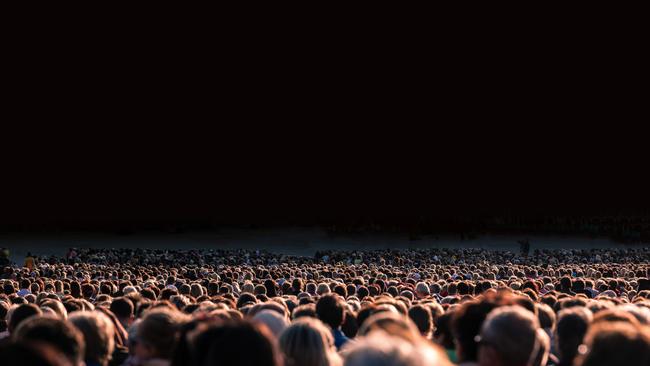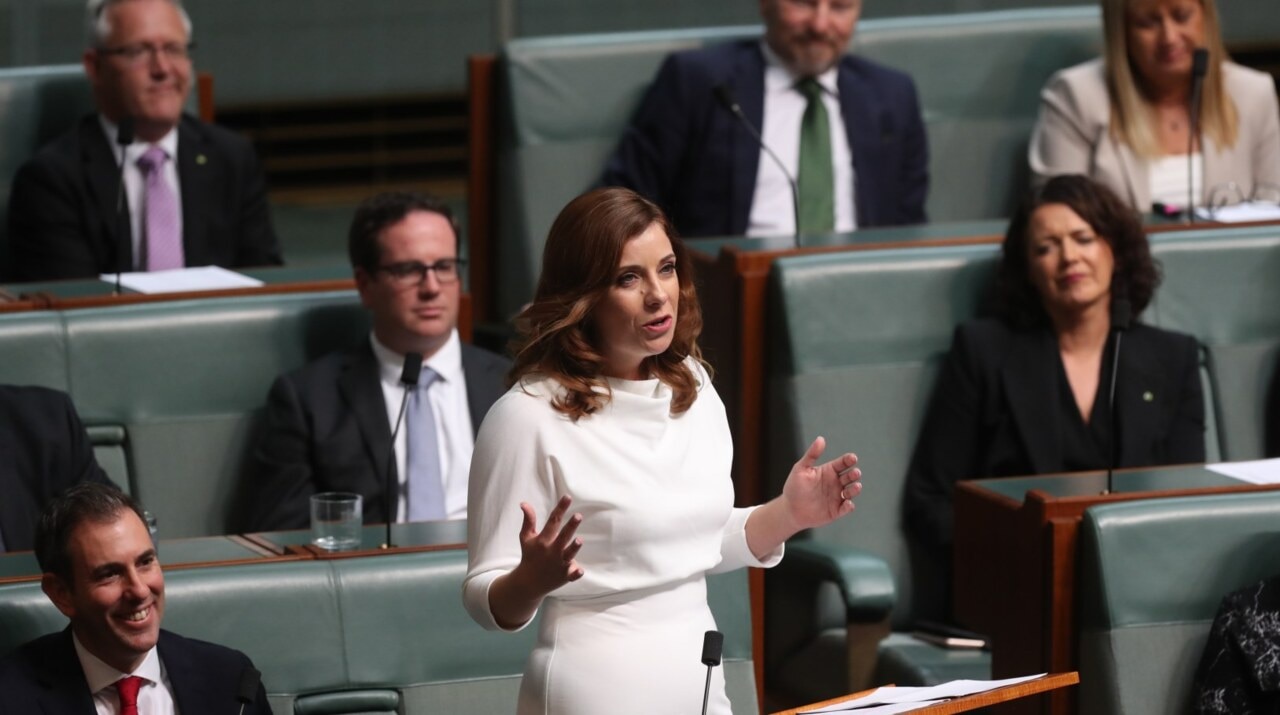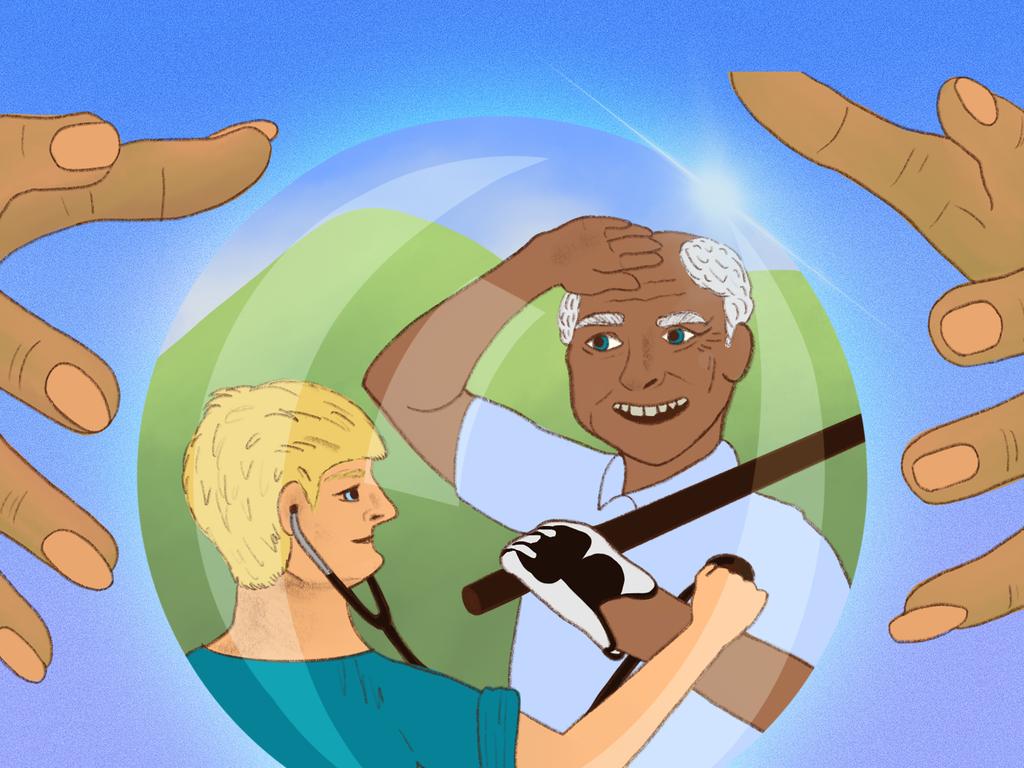An age-bomb is about to go off in Australia
Australia will look very different in the next few decades as the population ages and the number of elderly people almost doubles. Are we ready for the coming era of ageing?

Over the next 20 years the number of Australians aged 70 and over will rise from about 3 million to 5.5 million.
The nation will begin to look very different, with fewer schools, child care centres and children’s playgrounds needed and more entertainment, leisure, sporting and health facilities for the time-rich and fit-conscious golden-aged Australians.
One day, the Bob Hawke Beer and Leisure Centre in Sydney’s inner west, with its pub and prawn cracker kitschy vintage vibe, could make the move north as an expanded NSW central coast multipurpose pleasure dome, with a volunteering hub, gluten-free snacks, a dog park and DJ Albo’s 9am weekday set for aqua-aerobics.
A hundred years ago, if a woman reached the age of 65, she could expect to live another 13.6 years; today a woman can expect another 22.8 years. For men, the figures are 12 years a century ago and 20.2 years today.
According to the Intergenerational Report, the population is expected to continue to age over the next four decades, with Australia’s median age increasing by 4.6 years to 43.1, which will still be one of the lowest in the OECD. The share of the working age population (aged 15 to 64) will fall to 61.2 per cent over the same period, while the share of the population aged 65 and over is expected to increase to reach 23.4 per cent. It means the “old-age dependency ratio” is projected to continue to rise.
The evidence shows Australians are leading longer and healthier lives but also spending prolonged periods in ill health (on average, six months more of their lives than recorded 20 years ago) with the rise of more complex and chronic diseases putting a strain on Medicare, private insurance and the tax system.
Frail old age is about to be a more common feature in our society. At the 2021 census, one in six people in their 30s had a long-term health issue, whereas one in three in their 80s were dealing with an ailment, most commonly arthritis, heart disease and diabetes. Loneliness and depression also loom large for the frail, old-aged after the loss of a life partner. As well, more Australians are choosing home care, rather than residing in an aged care facility, with the number set to double to 2 million over the next two decades, changing the capital and labour needs for the sector.
According to the Australian Institute of Health and Welfare, males and females born in 2023 could expect to live an average of 88 per cent and 87 per cent of their lives in full health respectively, that is 71.6 years of the 81.3 years of average life expectancy for males and 73.6 years of the 85.1 years of average life expectancy for females.
Years lived in ill health, however, are also increasing, meaning that over the past two decades there’s been little change in the proportion of life spent in full health. According to the ABS, three-quarters of those aged 65 and over report good, very good or excellent health. In 2023, the ABS National Health Survey found eight in 10 Australians had a long-term health condition and half the population had at least one chronic condition
Dementia, coronary heart disease and chronic obstructive pulmonary disease were the leading causes of burden of disease for people aged 65 and over in 2023, followed by lung cancer, stroke and other musculoskeletal disorders. Dementia including Alzheimer’s disease was the leading cause of death among people aged 65 and over, closely followed by coronary heart disease.
Even though about 300,000 people are retiring every year, Australians are extending their working lives, and will continue to do so for decades, due to a combination of improved health and greater availability of less physically demanding jobs. Experts believe employers will offer older workers more flexibility to keep their skills, as well as using their wisdom and experience to help mentor younger workers.
University of Sydney professor in ageing and health Lee-Fay Low says society is shifting its thinking around what retirement means. “Working part-time, working on a passion project and volunteering are all common,” she says. “While evidence suggests that keeping active is beneficial for health, delaying retirement and active retirement might also have health benefits. Businesses could start to view older people as a workforce asset — older workers have valuable soft skills and expertise. Ageist stereotypes about older people in the workforce hurt would-be workers and their potential employers, who miss their talents. To entice older people to keep working, incentives like flexible working conditions can be brought in, allowing longer periods of unpaid leave for travel or allowances to care for grandchildren.”
Analysis by ANZ Bank economists shows the care sector is driving employment growth in the year to August, with over 1 million people employed in residential care services and social assistance services. Employment of “aged and disabled carers” rose by more than 60,000 in that period, with women gaining over 80 per cent of those jobs.

ANZ head of Australian economics Adam Boyton says the care workforce tends to have a slightly higher median age than the overall population and growth in the sector is pulling in more women, particularly aged 65 and over who were outside the labour market, rather than unemployed. “This growth in employment likely reflects the ageing of the population, ongoing growth in the NDIS and the mandatory increase in minimum care minutes in residential aged care facilities,” he says. “It is difficult to see employment growth across the care sector slowing significantly in coming years given expected increases in NDIS and aged care expenses as noted in the federal budget papers.”
As demographer Bernard Salt explains, a freight train is hurtling towards us. There will be a population collision in 2032 as the number of Australians aged 85+ will jump 62,000, up from 20,000 being added to this cohort in 2024. “We need skills, labour, accommodation facilities and funding to support what is in effect the first wave of the baby boomer generation moving into frail old age,” Salt writes.
That’s the year Brisbane is hosting the Olympic Games, so it will be upon us before we realise.
We need a strategic plan.





To join the conversation, please log in. Don't have an account? Register
Join the conversation, you are commenting as Logout